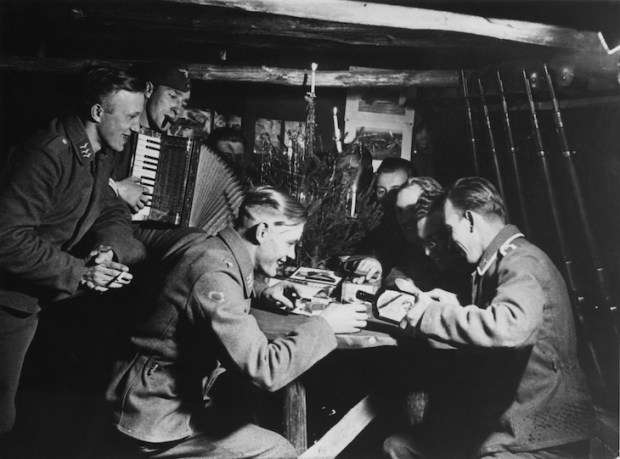Ole Thorstensen has been a carpenter for 25 years. A master craftsman, in fact. He is busy working on a minor job — ‘replacing a few windows, putting down decking and doing a number of other odds and ends’ — when he gets invited to bid for a loft conversion in a 19th-century apartment block in Oslo.
‘The Petersens have mentioned their desire for quality while avoiding unforeseen expense.’ No shit. The conversion will include a bedroom, bathroom and an office mezzanine and has all to be insulated, plumbed, wired, plastered, painted, floored and fitted out with furniture before a staircase can connect it to the floor below.
This is 1,000,000 kroner project (about £120,000) — ‘600-700 man hours needed in carpentry alone’ — and the job will represent approximately half of Thorstensen’s annual income. ‘If I get the bid wrong it is my wages that disappear.’
He only actually gets the job — the contracts signed and so forth — on page 88. And there’s a slight discomfort when the clients reveal they have an in-law with a link to the supply trade. But then — SPOILER ALERT — the loft gets renovated.
Thorstensen talks us through the process week by week, from the time-intensive bidding to the final coats of paint. His prep, both intellectual and 3D, is extremely thorough, and in a ‘dusty’ (not ‘dirty’) and uneven environment, with rough materials, he works with laser precision. (The cover blurb — ‘as solid as the craft that he describes’ — is perhaps a little more compelling in Norwegian.)
The work comes off without a hitch. Thorstensen knows his limitations and those of his co-workers. (Sharing some heavy lifting, he notes, is one way really to get to know a person.) He does things in the right order and sets the pace for everyone. Health and safety are legitimate concerns, but one can’t be too much of a fusspot about things.
He laments, mind you, the decline in experienced tradesmen steering the building process, and would like to see more engineers and architects get their hands dusty. With the gritted-teeth humour of long, wearisome experience, he waxes wroth about a firetrap created by bad ventilation. ‘This is a serious error.’ Beneath it is a sketch, with Munch’s ‘Scream’ emerging from the ventilation shaft.
And every now and then, as builders do, he downs tools for a quick chat about something: the social contract, urban geography, snobbery, sustainability, interior design, migrant labour, the ethics of using wood products, modern working culture, Ikea (desirability or otherwise), European linguistics, or the music of Captain Beefheart.
Thorstensen does not come across as self-important — ‘There is nothing mysterious about skilled manual labour’ — but he does cop to being ‘tactically minded’ in his dealings with the clientele. ‘I have to be a psychologist, sociologist, anthropologist and historian, in addition to what I ought to be: a tradesman with a vague understanding of microeconomics and law.’
In uncomplicated but quite fluent prose (he cites The Hunchback of Notre Dame and Treasure Island, and his translator has failed to spot a quote from Annie) he rarely dwells for more than a paragraph or two on minutiae, and never lords it with the trade vocabulary.
He certainly makes no case for the supposed benefits of physical labour. You can get hurt, often permanently; you will retire early; and ‘it is worth stating that manual work does not function as a panacea against stress or conflicts with your co-workers’. But there’s no hint of horny-handed aggro either.
He just comes across as a straight-forward man. Quiet and good-natured. Open to new ideas, but clear on what he wants. Little joshing, but even less grumbling. I imagine I could work for him (I could work for anyone who upholds ‘an almost total ban on commercial radio’). Tradesmen, he admits, come in all shapes and sizes. But he himself is a pure professional, and rightly proud of it.
Making Things Right won’t tell you how to do your loft conversion (those with a yen for handiwork might seek out Robert Twigger’s Micromastery); but it should tell you what sort of guy you’d like to have it done by. Thorstensen and his team ‘have all left a little part of ourselves in these walls and ceilings’. The Petersens are very happy.
And then it’s on to the next job.
Got something to add? Join the discussion and comment below.
Get 10 issues for just $10
Subscribe to The Spectator Australia today for the next 10 magazine issues, plus full online access, for just $10.
You might disagree with half of it, but you’ll enjoy reading all of it. Try your first month for free, then just $2 a week for the remainder of your first year.














Comments
Don't miss out
Join the conversation with other Spectator Australia readers. Subscribe to leave a comment.
SUBSCRIBEAlready a subscriber? Log in